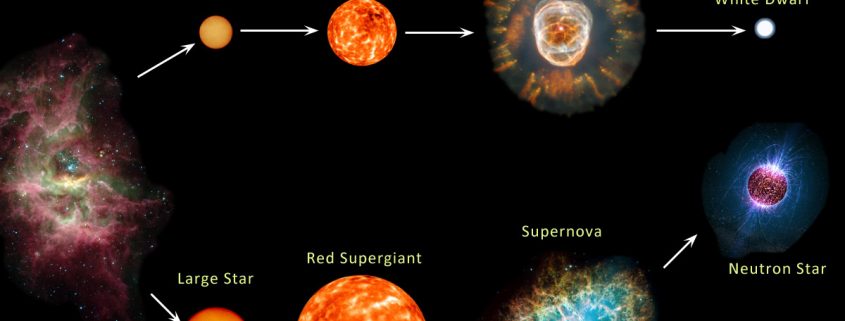A black hole is formed when a massive star starts running out of nuclear fuel at its interior (mainly hydrogen and helium) and begins to collapse under its own gravity. Such a star may become a white dwarf or a neutron star, but if the star is sufficiently massive then it may continue shrinking eventually to the size of a tiny atom: this is the so-called “gravitational singularity”. A black hole refers to the region in space around the singularity in which the gravitational force is so strong that not even light can escape its pull.
You are here: Home / A Massive Star Collapsing In Upon Itself Forms a Black Hole / Did you know that / A Massive Star Collapsing In Upon Itself Forms a Black Hole

Department of Astrophysics,
IMAPP, Radboud University,
P.O. Box 9010,
6500 GL Nijmegen, The Netherlands

Institute for Theoretical Physics (ITP),
Goethe University,
Max-von-Laue-Str. 1,
Frankfurt, Germany

Max-Planck-Institut für Radioastronomie (MPIfR),
Auf dem Hügel 69, D-53121
Bonn, Germany
Other Partnerships
-Institut de Radioastronomie Millimétrique (IRAM)
-European Research Council (ERC)
-Joint Institute for VLBI ERIC (JIVE)
-European Organisation for Astronomical Research in the Southern Hemisphere (ESO)
-Max-Planck-Institut für extraterrestrische Physik (MPE, Garching)
-Observatoire de Paris
-Event Horizon Telescope
-European Research Council (ERC)
-Joint Institute for VLBI ERIC (JIVE)
-European Organisation for Astronomical Research in the Southern Hemisphere (ESO)
-Max-Planck-Institut für extraterrestrische Physik (MPE, Garching)
-Observatoire de Paris
-Event Horizon Telescope
Follow us!

 Black Holes Distort Space-Time
Black Holes Distort Space-Time 
